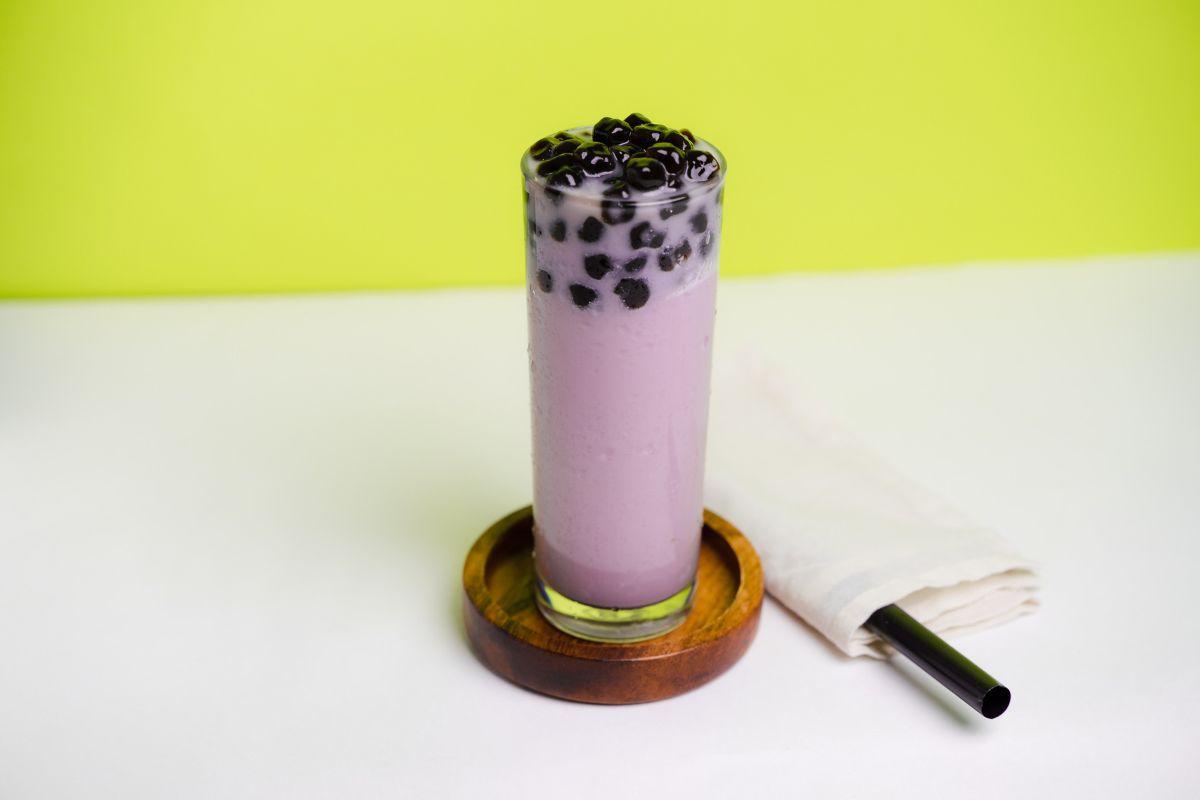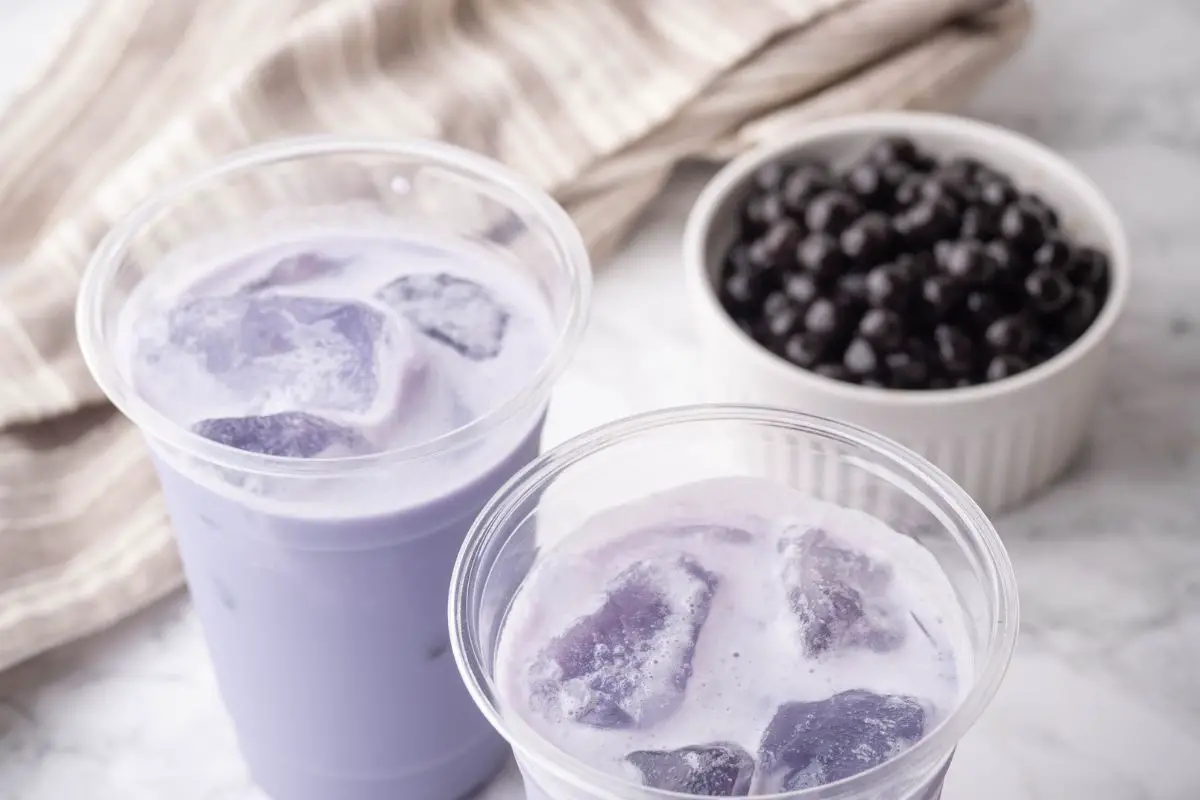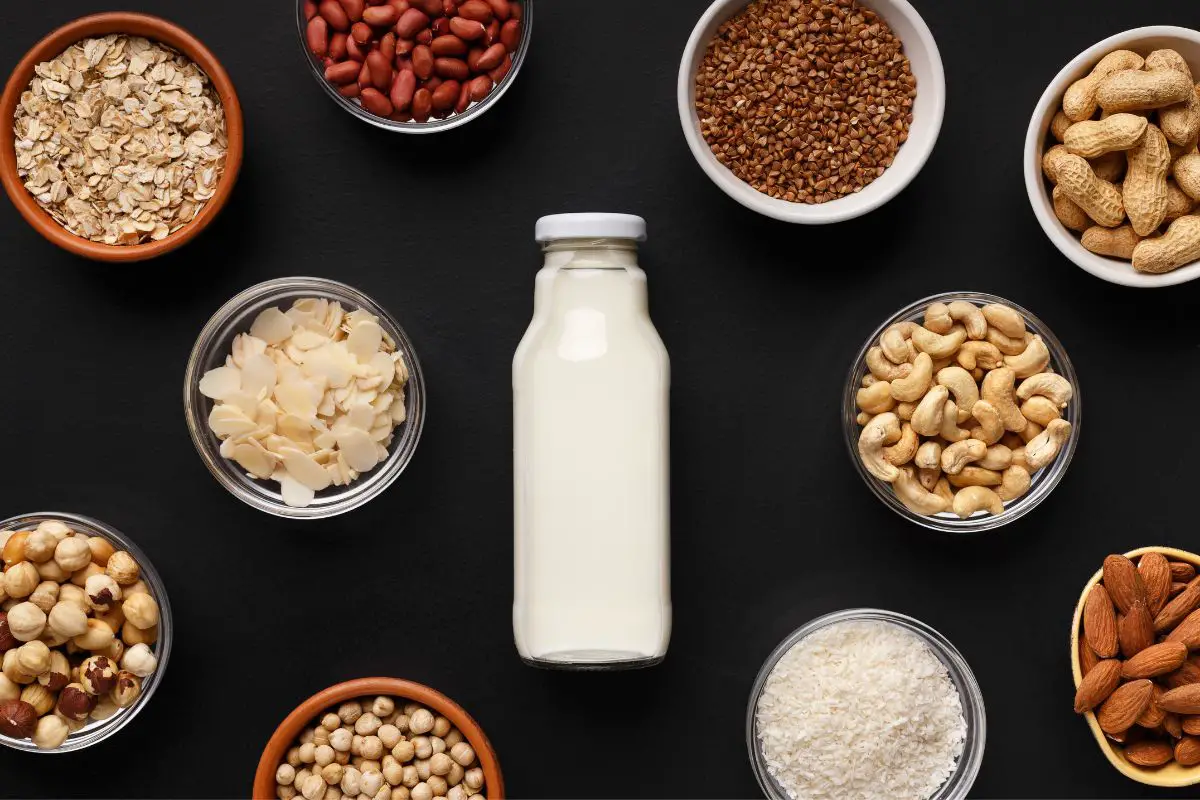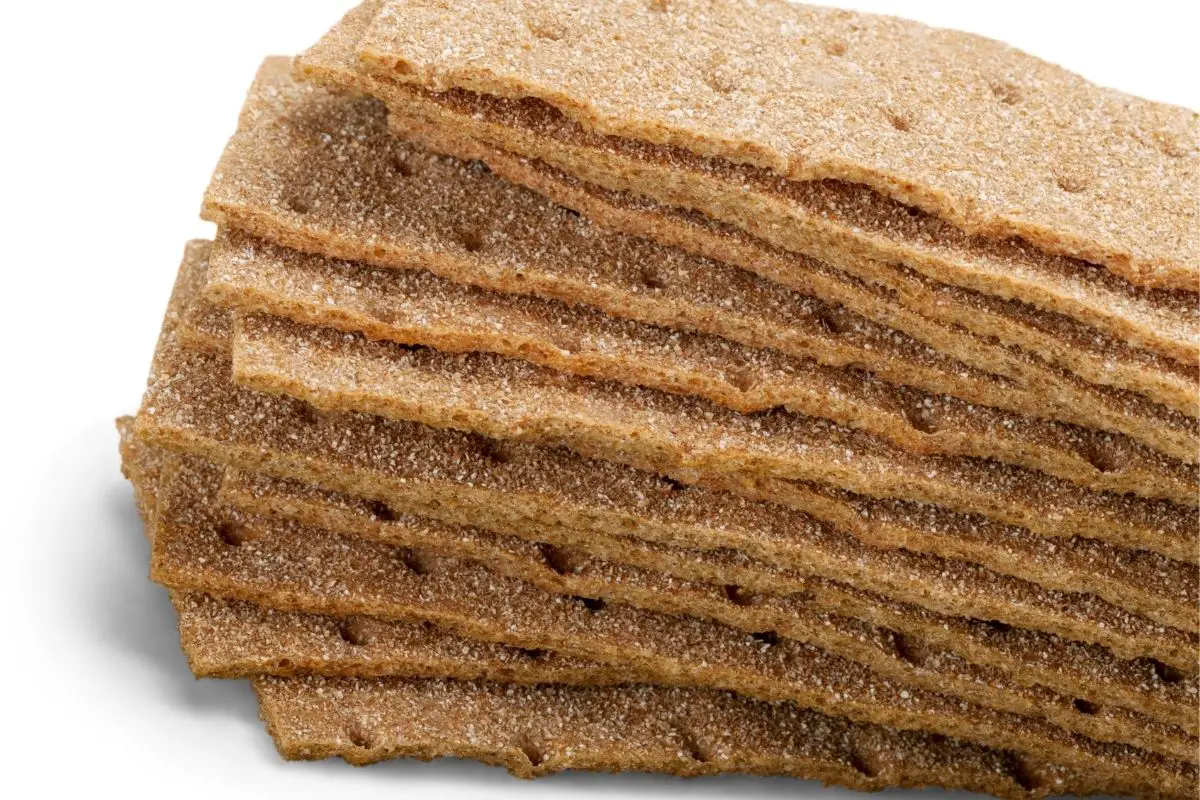Boba tea is a rising trend that has become more and more popular throughout the world, starting life in Asia, and becoming a much loved product throughout the world – thanks in part to the internet and the popularity of Asian culture and cuisine.

There are numerous variations, with one example being taro boba tea. But what exactly is taro boba tea, and what does it actually taste like?
What Is Boba Tea?
Boba tea, or bubble tea, as it has become known in the western world, is a beverage containing tea, sweetened milk, and tapioca pearls ‘or bubbles’.
The drink has much versatility and potential, and can have numerous ingredients and toppings – as well as being able to be served both hot and cold.
As such, it has become a popular drink amongst young people, especially in Asia, where it stands as one of the most popular drinks on the continent.
What Is ‘Taro’?
Taro is a popular root vegetable – found mainly in African, Oceanic, and Asian cultures – and is widely used for its corms, leaves, and petrioles, all of which are edible and suitable for cooking.
Taro is also said to be one of the earliest cultivated vegetables in the world, and as such has had numerous applications across a number of different countries and fields throughout the centuries.
What Is Taro Used For?
Taro is commonly used in the same way as potatoes – being roasted, boiled, or baked and served as a source of carbohydrates and starch.
However, in the case of boba tea, taro can also be used to make sweet milk – something that is useful for people who are lactose intolerant, vegan, or do not like the milk from cows.
What Does Taro Boba Tea Taste Like?
Generally speaking, a standard taro boba tea has the taste of vanilla, which makes it a pleasant and delicious sweet drink for people to enjoy.
It also makes it incredibly versatile, as the relatively neutral vanilla flavoring makes customization and experimentation more viable.
As such, there are numerous different flavorings and combinations, with many different countries and cultures having their favorite types.
Where Did Boba Tea Originate?
Boba tea was originally invented in Taiwan in the early 1980s, and quickly rose to prominence throughout Asia, where it is now one of the most popular signature drinks of the continent.
With the advent of the internet, and the more viability of intercontinental travel (specifically from the west to the east), Asian culture has boomed, and with it, boba tea was introduced to a new western audience – one that has taken to it in an equally strong way.
In the western world, boba tea has continued to blossom, and in many towns and cities now acts as a viable alternative to things like standard tea and coffee beverages.
Is Taro Boba Tea Healthy?
When talking about the health benefits of taro boba tea, it is important to separate it into its two components: the taro itself, and the boba tea.
Boba Tea
When it comes to boba tea itself, it couldn’t be further from healthy – due in part to the extremely high sugar content that the drink boasts.
Not only does it contain sweetened milk, and sugar, but it also contains the ‘boba’ itself – that is, the tapioca balls that make up the sweet texture of the drink.
Taro
On its own however, taro has numerous health benefits that can be good for many different things.
This is because taro is very nutritional, with statistics (per 100 grams) that include:
- Calories (cooked) – 142 kcal
- Energy – 594 kj
- Carbohydrates – 34.6 grams
- Fat – 0.11 grams
- Protein – 0.52 grams
- Calcium – 18 milligrams
- Iron – 0.72 milligrams
- Magnesium – 30 milligrams
- Manganese – 0.449 milligrams
- Phosphorous – 76 milligrams
- Potassium – 484 milligrams
- Zinc – 0.27 milligrams
Does Taro Have Health Benefits?

While boba tea might not necessarily be healthy in any sense of the word, the taro root itself has many numerous health benefits that have long since made it an important aspect of cuisine and traditional medicine.
Rich In Nutrients
As seen above, taro roots are naturally rich in numerous nutrients, all of which are required for a healthy and functioning body.
These nutrients are useful for a number of things. Potassium (which taro is high in) is good for lowering blood pressure – neutralizing the salt in the blood and reducing the risk of things like heart attacks, chest pains, and strokes.
Other notable nutrients, such as vitamins A, C, and K, are also useful for strengthening the immune system and protecting the body against disease.
Controlling Blood Sugar
There is also some evidence to suggest that taro could have a positive effect on high blood sugar levels.
Taro contains high levels of fiber, which is a nutrient that the body cannot digest.
This helps to attack and latch onto carbohydrates in the body, prolonging the time it takes to break them down, thus stopping large spikes in the blood sugar.
Anti-Cancer Properties
Taro roots also contain compounds known as polyphenols – particularly the polyphenol known as quercetin, which can trigger cancer cell death, and slow down the growth and progression of the disease in the human body.
There are also powerful antioxidants which can help to slow down the decline of cells in the body, as well as the natural wear and tear experienced as we age.
Potential Weight Loss
There is also some evidence to suggest that taro could aid weight loss – although it is worth pointing out that the research on this is limited at present.
However, the high fiber levels suggest that taro could help to slow stomach emptying – keeping you fuller for longer, and reducing the chance that you will snack in between meals, or eat more than you otherwise would throughout the day.
Of course, this only has an impact as part of a balanced diet, and alongside exercise, and is not a miracle solution.
Final Thoughts
And there we have it, everything you need to know about taro boba tea, what it is, and what exactly it tastes like.
It’s true that boba tea – in all its forms – has become more and more popular in recent times, spreading like wildfire with the popularity of the internet, and finding loyal customers all across the globe.
So if you want to find your new favorite beverage, why not give taro boba tea a try? Something tells me you won’t be disappointed!
Taro Boba Tea: Everything You Need To Know!
Course: Taste Like4
servings30
minutes40
minutes300
kcalIngredients
Taro Boba Tea
Directions
- While boba tea might not necessarily be healthy in any sense of the word, the taro root itself has many numerous health benefits that have long since made it an important aspect of cuisine and traditional medicine.
- Potassium (which taro is high in) is good for lowering blood pressure – neutralizing the salt in the blood and reducing the risk of things like heart attacks, chest pains, and strokes.
- Other notable nutrients, such as vitamins A, C, and K, are also useful for strengthening the immune system and protecting the body against disease.
- Taro contains high levels of fiber, which is a nutrient that the body cannot digest. This helps to attack and latch onto carbohydrates in the body, prolonging the time it takes to break them down, thus stopping large spikes in the blood sugar.
- Taro roots also contain compounds known as polyphenols – particularly the polyphenol known as quercetin, which can trigger cancer cell death, and slow down the growth and progression of the disease in the human body.
- However, the high fiber levels suggest that taro could help to slow stomach emptying – keeping you fuller for longer, and reducing the chance that you will snack in between meals, or eat more than you otherwise would throughout the day.
Recipe Video
https://youtu.be/dA8R0RkyskYVideo can’t be loaded because JavaScript is disabled: TARO 101💜 what is taro? how do you pick a good taro root? how do you cook taro for boba drinks? (https://youtu.be/dA8R0RkyskY)- What Exactly Do Chickpeas Taste Like? Is There A Distinct Flavor? - September 30, 2023
- Top 11 Low Carb Options at Sonic Drive-In for Keto Diet - September 30, 2023
- What Should You Serve Alongside Potato Salad? 8 Incredible Side Dishes - September 30, 2023











